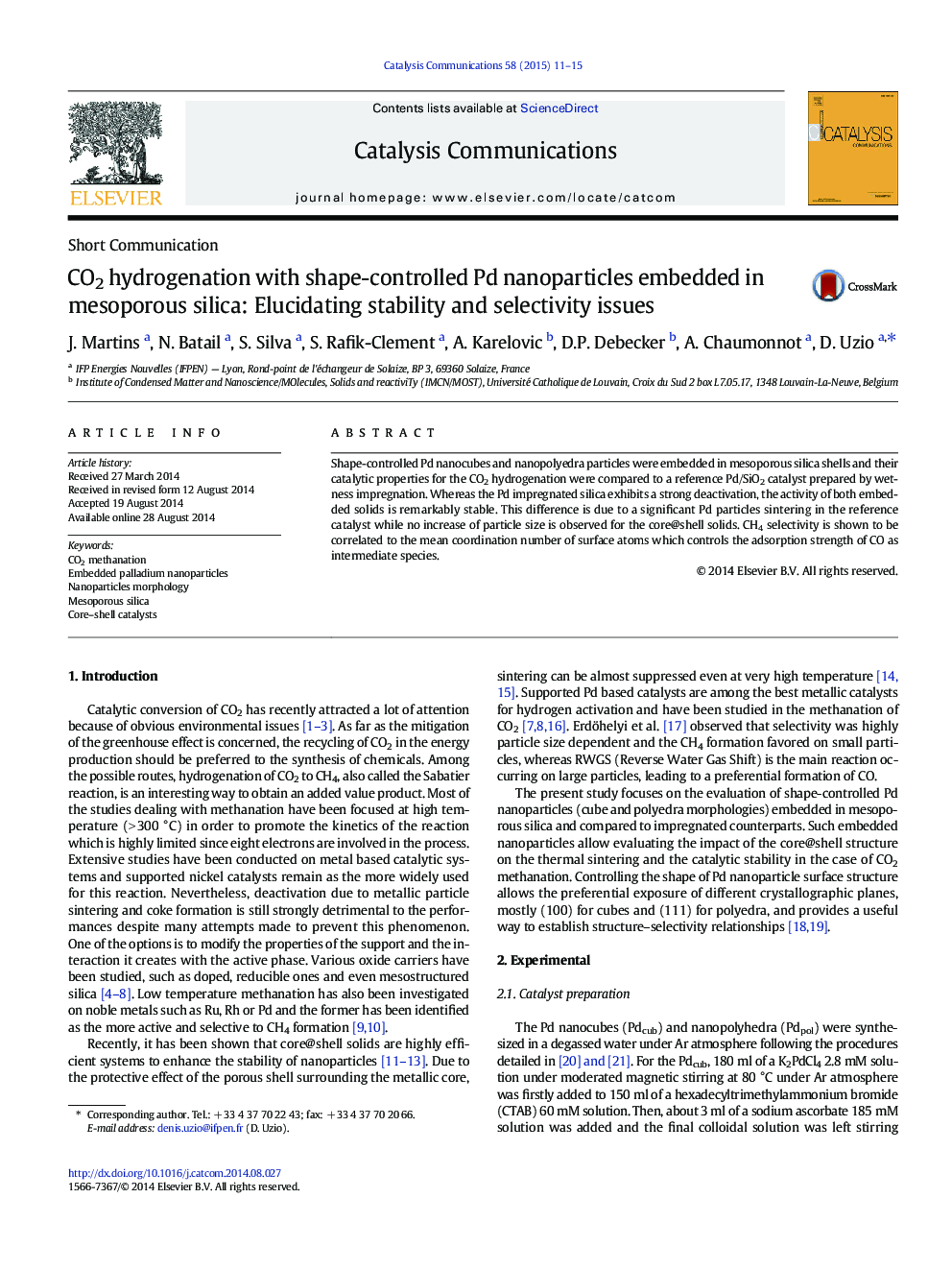| Article ID | Journal | Published Year | Pages | File Type |
|---|---|---|---|---|
| 49894 | Catalysis Communications | 2015 | 5 Pages |
•Pd cubes and polyedra nanoparticles embedded in mesoporous SiO2 for CO2 hydrogenation•Embedded Pd nanoparticles much more stable than impregnated counterpart•Deactivation of the impregnated reference due to thermal sintering•Selectivity highly affected by Pd site coordination number and particle morphology•CH4 selectivity decreasing order: corners, edges, steps; (100) facets; (111) facets
Shape-controlled Pd nanocubes and nanopolyedra particles were embedded in mesoporous silica shells and their catalytic properties for the CO2 hydrogenation were compared to a reference Pd/SiO2 catalyst prepared by wetness impregnation. Whereas the Pd impregnated silica exhibits a strong deactivation, the activity of both embedded solids is remarkably stable. This difference is due to a significant Pd particles sintering in the reference catalyst while no increase of particle size is observed for the core@shell solids. CH4 selectivity is shown to be correlated to the mean coordination number of surface atoms which controls the adsorption strength of CO as intermediate species.
Graphical abstractFigure optionsDownload full-size imageDownload as PowerPoint slide
